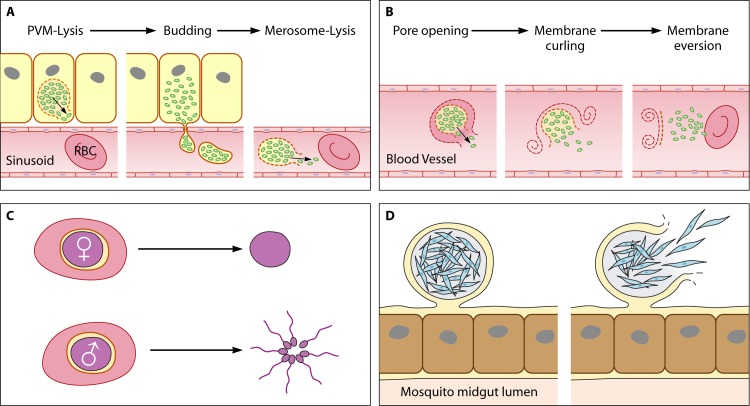Fig 2.
Life cycle stage-specific egress strategies for Plasmodium. The complex life cycle of the malaria parasite comprises four stages requiring egress. (A) First, hepatocytes release merozoites (green) to initiate the blood stage. This occurs by an unconcerted egress strategy involving parasitophorous vacuolar membrane (PVM) lysis, the release of merosomes into the bloodstream by budding, and, finally, merosome lysis. (B) Second, merozoites proliferate in a lytic cycle in red blood cells (RBCs). The lysis of the PVM and the destabilization of the RBC cytoskeleton culminates in a rapid succession of events, namely, pore formation, the curling of the RBC membrane, and the projection of the progeny by the buckling/eversion of the same membrane into the bloodstream. (C) Third, gametocytes (purple) inside RBCs are taken up by a mosquito and egress into the midgut for fertilization. Egress results in the release of one female macrogamete or eight flagellated male microgametes. (D) Fourth, sporozoites (blue) escape from the oocyst in the mosquito midgut epithelium in order to migrate to the salivary glands. The oocyst stage is the only replicative phase of the parasite that does not take place within a host cell. Instead, the cyst is surrounded by an inner layer of parasite origin and by an outer layer derived from the basal lamina. Interestingly, apart from the lytic cycle in RBCs, all other egress events are preceded by the differentiation of the parasite into a new form specifically adapted to meet the respective requirements for successful egress and to initiate the next stage of the life cycle.

